At Tourism's Fragile Frontier
Caught in the tourism wave, these remote villages in the Colombian Andes face the Faustian choice between promise and preservation.
Written by Anastasia Austin; edited by Douwe den Held
"No offense," Líbano's historian, Carlos Rivera, says, cocking his head and flashing a wry smile. "But we don't really like tourists here."
We're sitting in the town's stuffy one-room museum, its founders and residents glowering down at us from black-and-white portraits.
Líbano is one of several rural towns dotting the western slope of Nevado del Ruíz — an active volcano and one of Colombia’s favorite mountains for adventure travel. Across the mountain, on its easter slope, lies Salento — a once quaint village that is today swarming with tourists.
Old timers like Rivera have watched tourism swallow up Salento with alarm and are seeing a similar storm brewing on their side of the mountain, so I can’t say I begrudge him his directness.
A Faustian Bargain
In photos, Salento is cobblestone streets with rows of brightly painted houses. It is a traditional central square filled with colorful jeeps. And it is a valley with Quindío wax palms the size of skyscrapers – Colombia’s national tree – cutting through the mist.
I’m sure all that’s there. Yet, I struggled to see it through the sea of fanny-pack crowds and selfie sticks. Having cycled there during our winter holidays in 2023, we got a small apartment away from town and, after the second day, decided to stay there rather than venture into what felt like the Disney World of Colombia.
Salento has become the poster child for over-tourism in the country but it has its equivalents all over the world. Venice is sinking and Barcelona is overrun. Only about 5% of Hawaii’s population is native Hawaiians and Puerto Rico’s biggest reggaeton star, Bad Bunny, recently released a whole album lamenting the loss of his home and culture to wealthy foreigners.
Tourism cuts both ways, leaving destinations bleeding from self-inflicted wounds.
Europe has had some success stemming the tide. But in the post-pandemic travel boom throngs of tourists have spilled into charming but often poor – relative to their visitors – destinations, which have a harder time pushing back.
Nevado del Ruiz fits the bill.
It rises from Colombia's Central Cordillera like a billboard advertising natural wonder: the volcano feeds a score of hot springs scattered around páramos, an endangered martian landscape unique to a few places in the world.
This is what has driven tourists to Salento for decades.
Meanwhile, on the western side of the mountain, the tiny hamlet of Murillo – just uphill from Líbano – lay quiet, despite being surrounded by the same natural bounty, much of it in pristine condition.
Now, all that is changing.
In the past few years, Murillo, which has traditionally lived off of ranching and potato farming, went from having a handful of hostels to dozens.
Trendy restaurants, some decorated with the colorful umbrellas that signal a photo opportunity, are expanding from the central square into side streets. Cafes no longer serve just tinto – the cheap weak coffee favored by locals – instead catering to refined palates that demand flat whites, cortados, and nitrogen-infused cold brews. On weekends, luxury cars line the central square – their license plates a who’s-who of Colombia’s cities.
Down the hill, the traditional coffee outpost of Líbano is going through a similar change, though it’s less striking since Líbano was always much bigger than Murillo.
Locals eye the incoming tide of tourism with the wariness of those who've watched neighboring towns wash away, their cultural foundations dissolving under the relentless current of strangers’ feet.
The historian Rivera is one such voice. “It used to be that everyone knew and greeted each other in the main square,” he tells us. “But now it’s full of strangers, always in a rush to get somewhere.”
Even local business owners who depend on tourism share his concerns.
"The same thing could happen here that’s happened all over the world – from Salento to Hawaii and Puerto Rico,” José Alberto Mojica, the owner of a boutique hotel in Líbano tells us. “So, we receive foreigners with a lot of love here, but we also have to protect ourselves so it doesn’t happen to us."
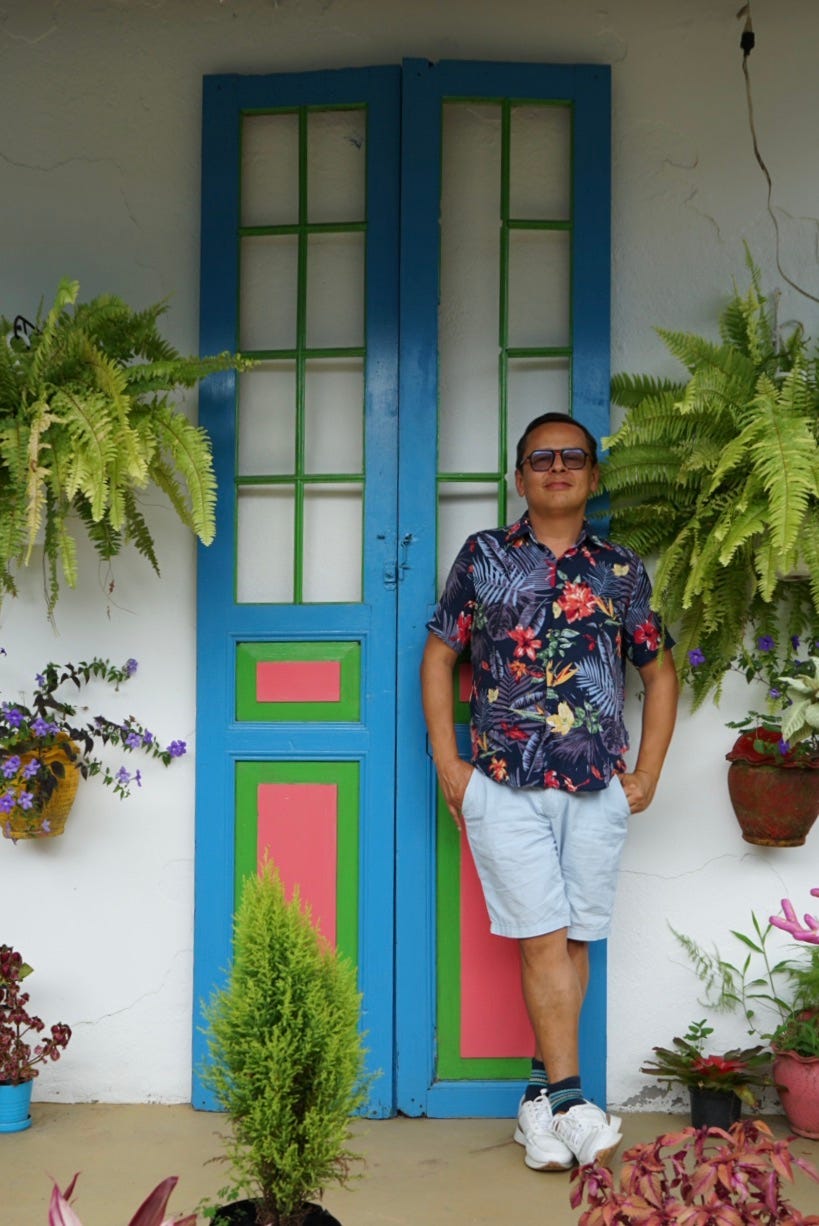
Small Town, Twin Plagues
A Colombian man in a forest green cycling bib and a high-end cycling shirt slumps down at the last of three tables in a cafe facing Murillo’s town square. Neither his flashy sunglasses nor his expensive road bike seems to fit his frame, especially once he unzips his shirt and an ample, hairy belly falls out.
“Huevonnn,1” he moans looking around. He’s attempting the climb up Nevado del Ruiz’s western face – and wants some acknowledgement from the other two tables.
Aside from us, his audience is two Colombian ranchers, one wearing the traditional straw hat. Our little party is united in giving the cyclist nothing but silence.
His American sidekick – a caricature of a man with a cartoonish Boston accent and a Red Sox cap pulled over a pink, embarrassed face - comes to the rescue. “You know what sucks about this town?” he says in a loud voice, pausing as if on stage at open-mic night. “Too many gringos.”2
I think he’s talking about us. He’s grinning, but his “gringo” has no confidence in it.
Before departing, they loudly lecture the barista on how she made their drinks wrong. We can hear them through the cafe walls.
With the only obvious Spanish speaker gone, the Murillo ranchers resume their hushed, worried conversation: they’re comparing notes on how much the local armed group is charging in extortion. They are strategizing how to survive.
This is the uncomfortable reality of Murillo today – ambushed by the twin plagues of past and present: by the armed groups that have made life in rural Colombia hell and the growing swarms of obnoxious tourists that have started to arrive as secrutiy perceptions improve.
Historically, insecurity and inaccessibility have kept tourists out of Murillo.
Into the early 2000s, armed rebels frequently overran the town. But at the turn of the century, the hold these groups had over the territory weakened and today they pose little threat to visitors.
After the COVID-19 pandemic, as tourism to lesser-known destinations exploded, influencers discovered Murillo’s hot springs and small-town charm – publicizing it as a “hidden gem.”
Then, in 2023, a paved highway across the Nevado del Ruiz connected Murillo and Líbano to major Colombian cities, making these towns easily accessible for the casual traveler. As a bonus, that road became the longest paved climb in the world – putting it on the map for cycling enthusiasts looking for a challenge.
Now, these towns find themselves caught between a rock and a hard place. Endemic poverty makes the allure of “tourist dollars”3 hard to resist. Meanwhile, their weak local governments and tiny populations lack leverage against powerful outside forces.
“Tourism is a predatory plague,” Mojica tells us. “It can put an end to whole cultures, because everything becomes too expensive. Look at Salento – its people can’t afford to live in their own town. Everything is for tourists – all the apartments are Airbnbs.”
In Murillo, a similar dynamic is in motion. Outsiders own many of the new hotels and restaurants, making the investments many ordinary people from Murillo can’t afford to.
Tourism also jeopardizes the incredibly fragile páramo ecosystem, which begins about 500 meters up from the town square. One of the most important plants in this ecosystem is the frailejon: a tall, alien-like plant that captures the water that millions of those living on the mountain slopes and in the valleys below depend on.
Though it’s against the rules, tourists park their cars in the middle of the road and wander off into the páramos. They touch the easily damaged frailejones and spread invasive species.
We saw one such invasive specie for ourselves: a spiky yellow deceptively native-looking flower that is choking out indigenous plants.4
This plant arrived in the area as decoration for people’s vacation homes, then its seeds spread on the tires of the heavy machinery used to build the highway. Now oblivious tourists are spreading it even further into protected areas on the soles of their shoes.
A Lifeline
There’s a shy self-conscious way that people glance at your recording device, when they’re not used to being interviewed. These are the people that tend to stick to just the facts as if their feelings and lived experiences couldn’t possibly be of any interest.
Rubi Casas Gúzman glances at my phone that way. She is a mother of two who we meet in a trendy Murillo cafe that doubles as the office for an adventure tour company. Her story demonstrates how tourism jobs can be a lifeline in towns like Murillo and Líbano.
Casas has worked in the kitchen of this tourist business since the end of 2024, when armed members of a local guerrilla group showed up at her doorstep – asking about her kids.
“They knew everything. Knew that I had two boys – knew their ages,” Casas tells us. “They were there to recruit them.”
Luckily, her two sons were not home, likely saving them from meeting a similar fate to the young guerrillas occupying her house. Most of the dissidents were underage, the youngest was a 12-year-old girl – small hands holding big guns.
The next day, government forces raided Casas’ home, destroying it in the process and putting an end to the occupation.
“Screams upon screams upon screams. That’s what we heard,” she recalls. “It was the girl – the 12-year-old – she was hysterical.”
Casas was diagnosed with post-traumatic stress disorder because of the raid. Though she has found refuge and a job in Murillo, she still worries about her two sons.
“I’m scared,” she tells us. “They boys want to go back to the finca,5 but what if the guerrillas come back for them?”
Child recruitment in Colombia skyrocketed in 2024, with over 400 cases registered nationwide compared to 37 in 2021. And, even if her sons escape recruitment by armed groups, that doesn’t necessarily mean that they will escape the clutches of Colombia’s ongoing conflict. One son wants to join Colombia’s armed forces, Casas says.
“I tell him I don’t want him to and he says ‘what else is there to do, mom? And I don’t know what to tell him. He wants to enroll because of the lack of opportunities, not because he likes it.”
Here the coffee shop’s owner and local mountain guide, Felipe Echeverry, chimes in, “he could work in tourism.”
Casas smiles, nodding enthusiastically, “Ah yes. That’s really the only other option - he could work as a guide,” she says. “The people here have helped us, welcomed us,” she adds nodding towards Echeverry.
Echeverry is a Líbano native who spent two decades working in tourism and used to be a guide on the Salento side of the mountain, before coming back home to expand the business.
Tourism, he tells us, is a double-edged sword – if done wrong, it can endanger the culture and destroy the environment. But it can also provide a way out for locals like Casas and her son.
“I think we live in a paradise,” he tells us. “And I think that it’s possible to make a living off this paradise… It can be a huge advantage, if you do it responsibly.”
Easier said than done
“Hello, my name is Ernesto Pérez,” a strange turd-like creature with many eyes sings, dancing around the screen. “You don’t know me but I am your friend. I am a plant without much color, my job is to take care of the water.”
Ernesto Pérez,6 is in fact a frailejón — a cartoon character created by the Colombian government to educate kids on the importance of protecting the environment.
In theory, education, together with regulation on how many visitors come to fragile environments, should curb tourism’s worst excesses. Reality, as Ernesto Pérez’s story shows, is not always that simple.
The friendly frailejón’s campaign backfired.
“Ernesto Pérez popularized the páramo. Most kids in Colombia know the lyrics,” Echeverry says as he shows us a video of the song that went viral in 2022. “A lot of people wanted to visit, putting tons of pressure on the National Park.”
Worse, Ernesto Pérez’s friendly image made frailejones huggable. Authorities have tried to forbid this behavior. But Instagram posts of people hugging real-life frailejones remain ubiquitous, because enforcement is near-impossible.
Hugging frailejones damages them. But some visitors go even further, taking these plants out of their ecosystem to bring them home. In aggregate, this behavior risks destroying the páramos.
Policies to regulate tourism also face an uphill battle against economic interests.
In October 2024 local authorities adopted pico y placa ambiental on the highway that connects the east and west sides of Nevado del Ruiz. The system restricts road usage based on the last digits of license plate numbers.
The measure faced almost immediate pushback in Murillo, including complaints from business collectives that it had set off an “economic crisis.” They pressured the government into briefly walking back pico y placa, although ultimately it remains in place… for now.
Competing interests continue to fight over this measure and other regulations on tourism, risking the destruction of the very thing that draws people in.
Huevon: a Colombian slang term. In this context it would translate, roughly, to “Damnnnn.”
Gringo: a Colombian slang term referring to foreigners, especially those from the U.S. or other English-speaking countries. Often used in a derogatory way.
In Murillo, it's still mostly pesos from wealthier Colombian tourists, rather than foreigners.
The invasive species is the Ulex Europeus. Here’s a thesis about this plant overtaking the area around Murillo.
Finca: a countryside property, usually with land for farming, cattle, or leisure. In this case, a farm.




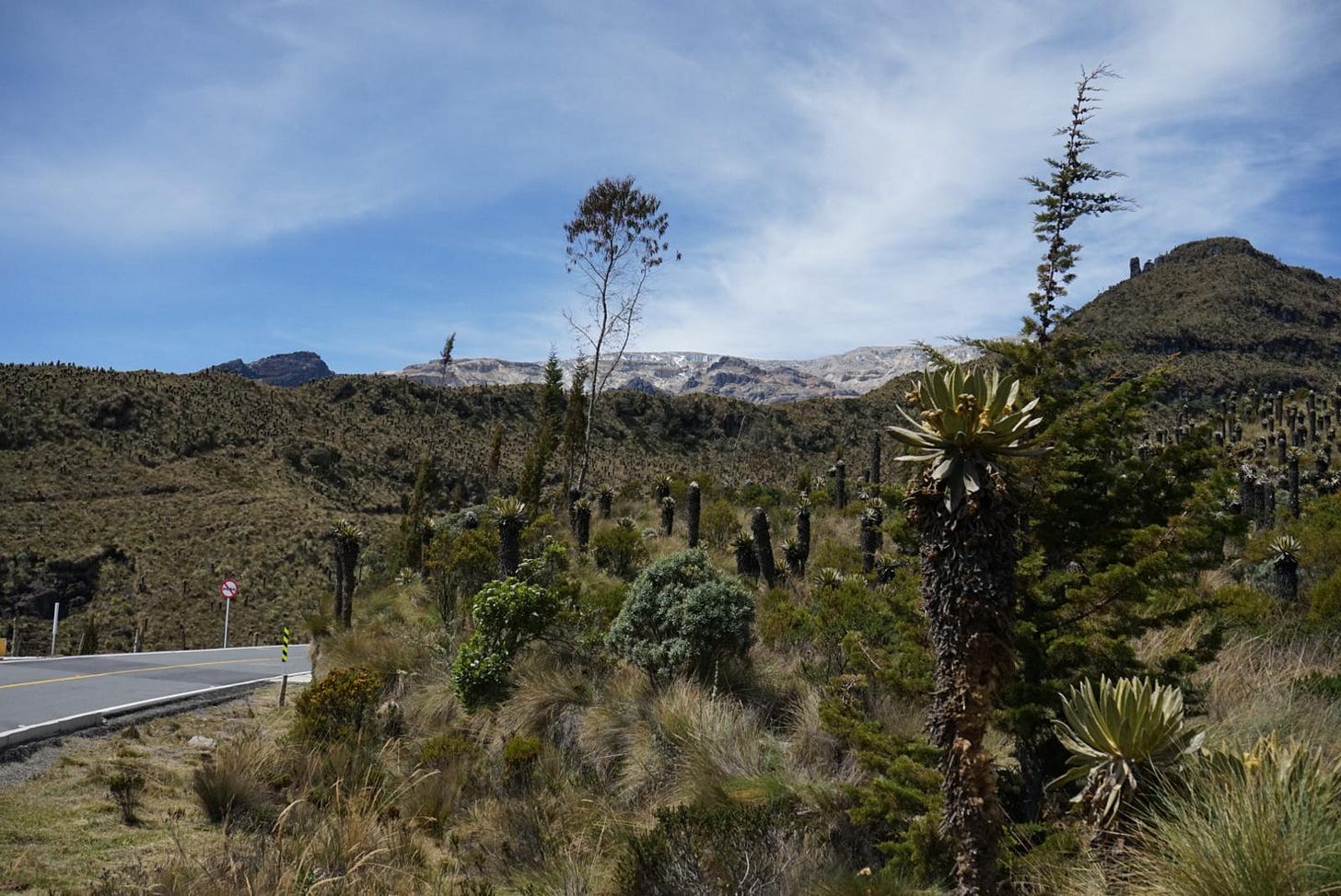
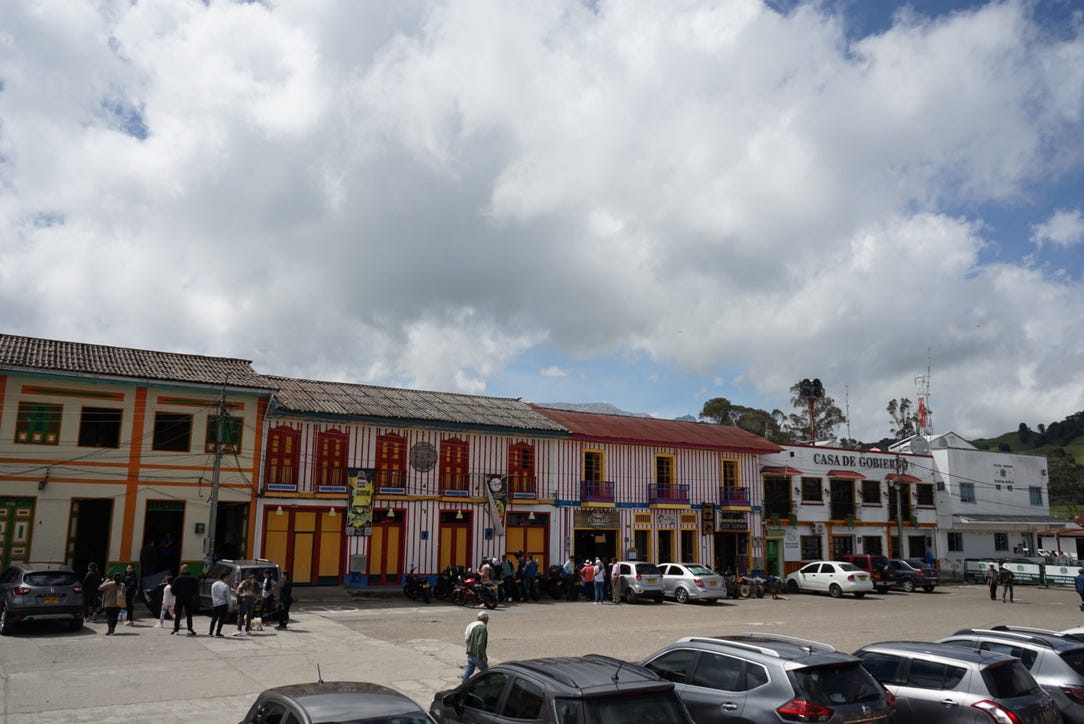
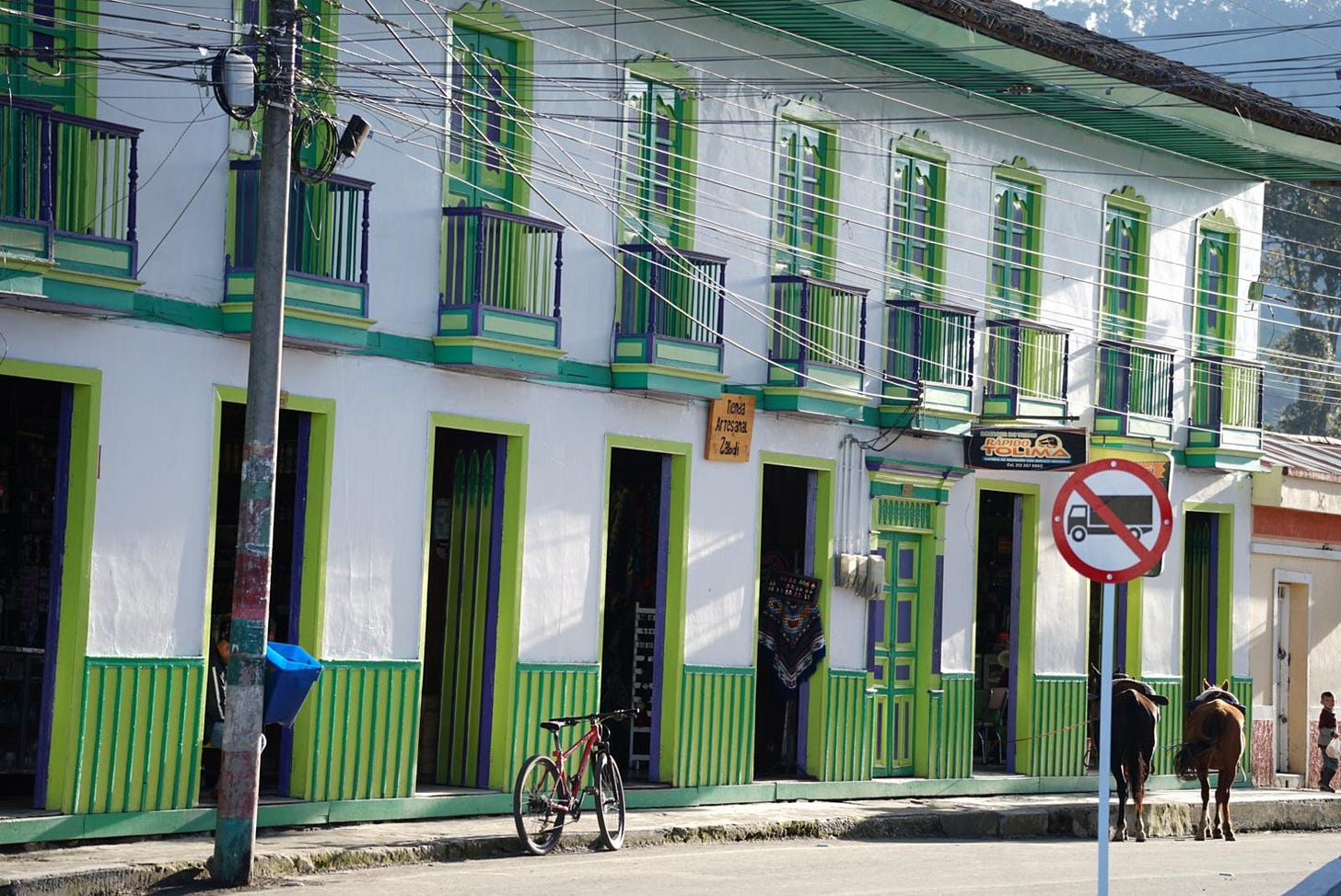
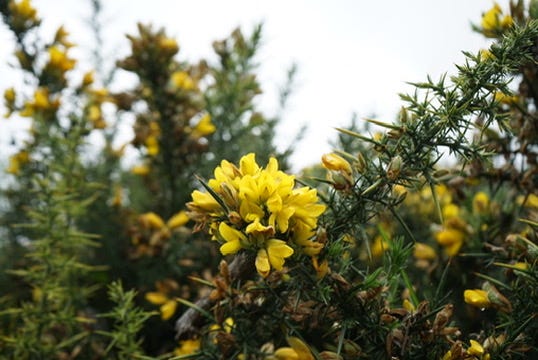
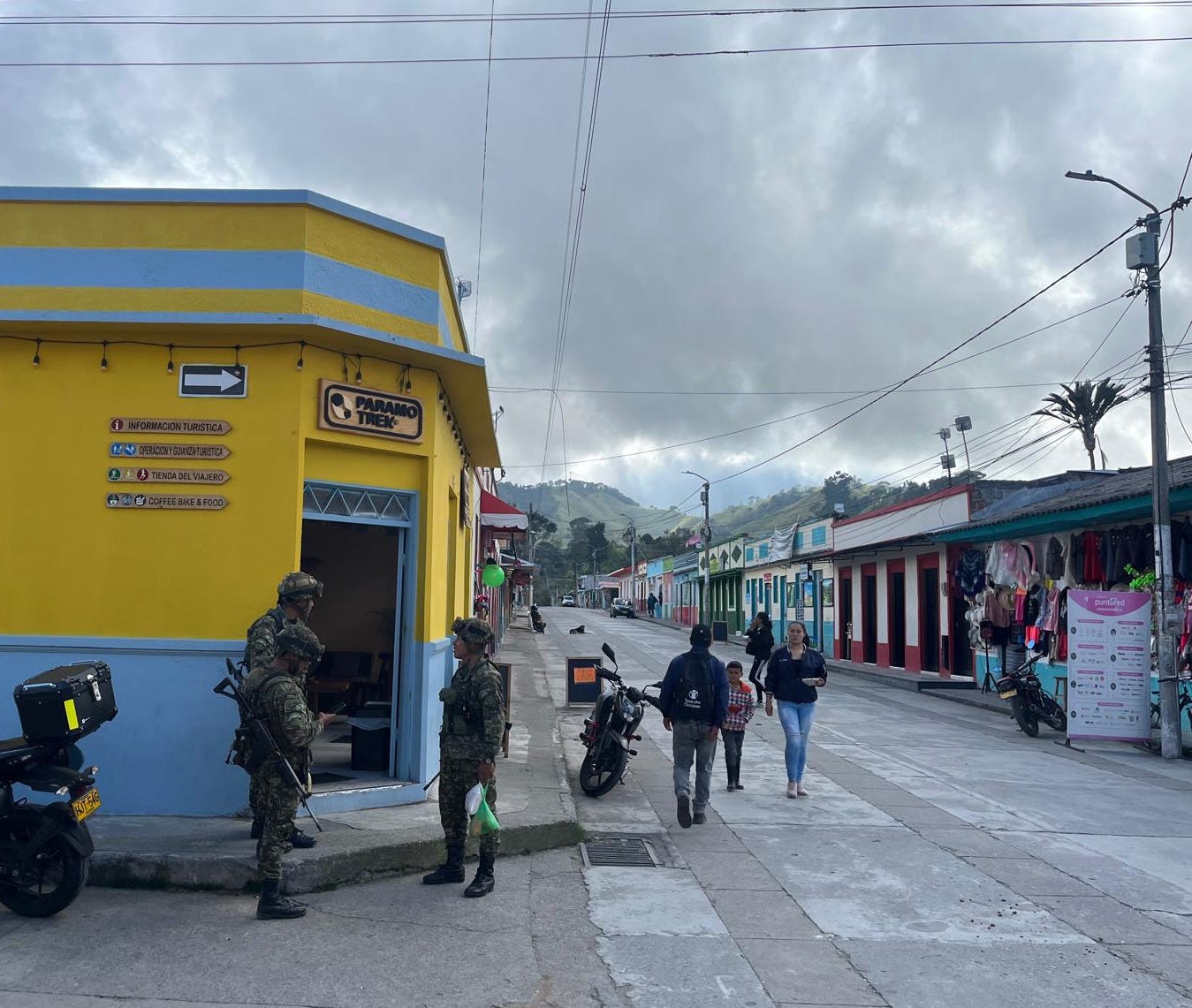
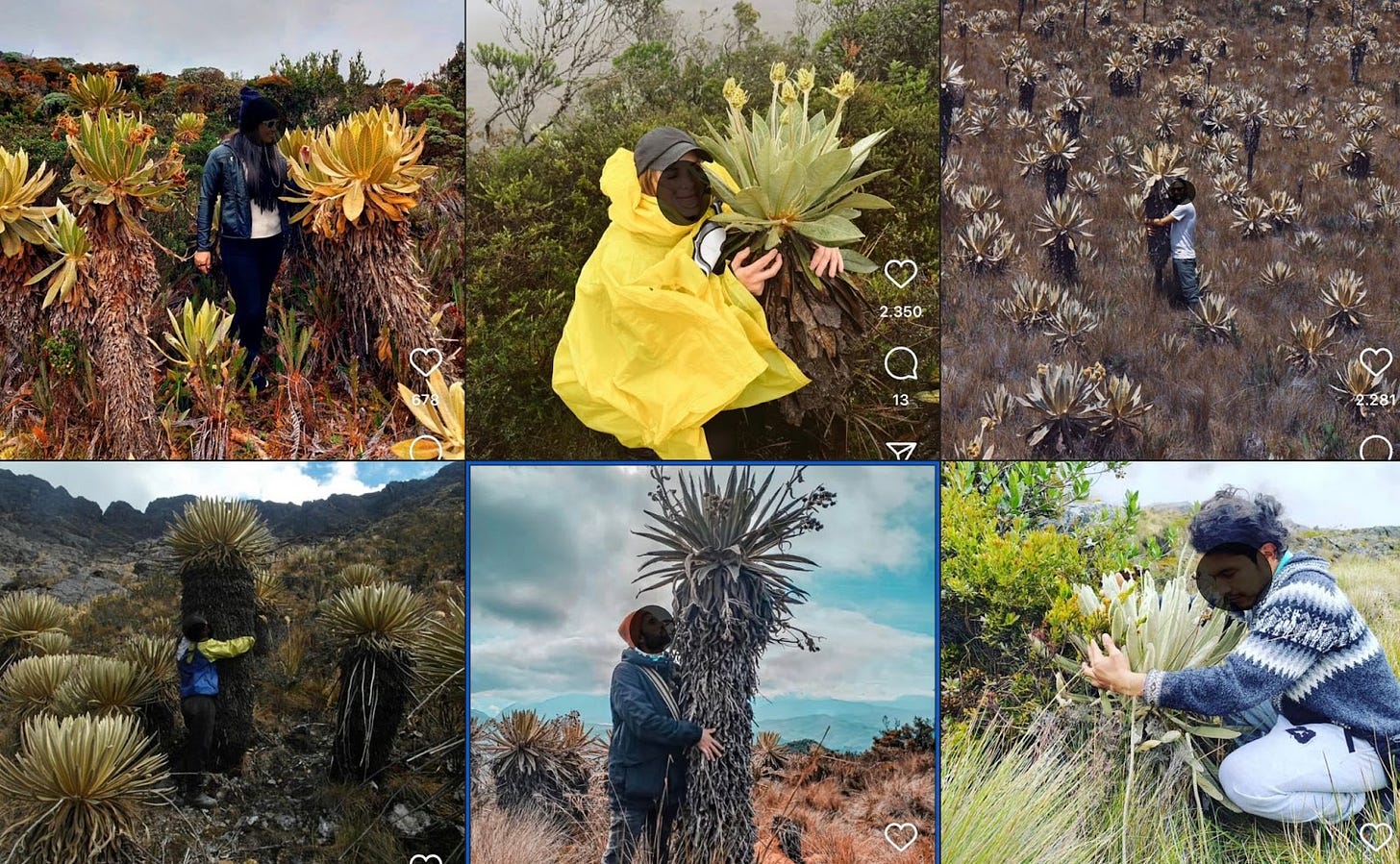
Great reporting on the ground. But, it should be said that any move away from tintos is a step in the right direction.
What an interesting story and good written, through the eyes of locals and nature.